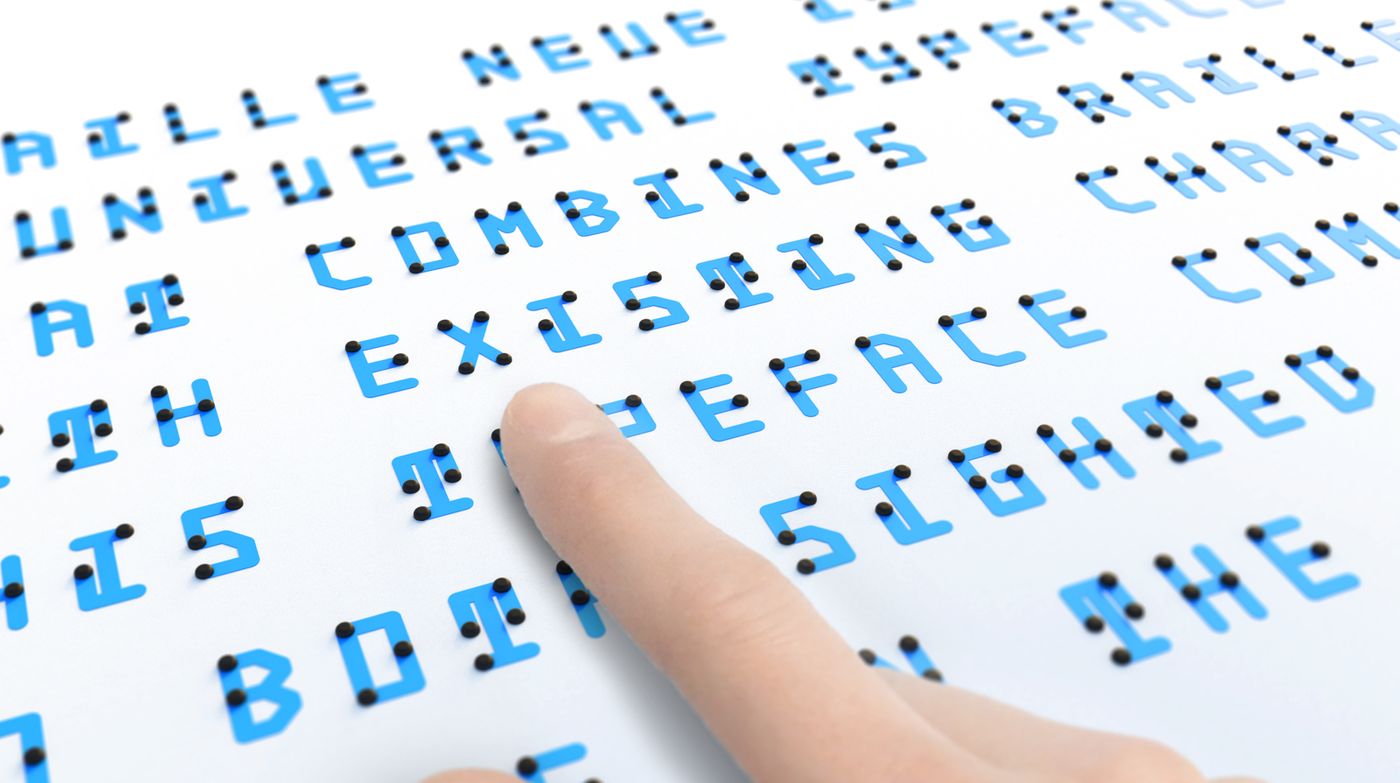Braille Neue: A Font for the Blind and Sighted
Japanese designer Kosuke Takahashi created a new font called Braille Neue that overlays English and Japanese alphabets with Braille, in an attempt to create more synchronicity and co-use between the writing systems.
Braille was invented in the 19th century by Louis Braille, who lost his sight in childhood. Defined by blocks called cells with patterns of raised bumps called dots, it is a tactile language still in use today.
“The biggest benefit is that one sign can work for everyone anywhere. Additionally, this typeface does not require Braille to take up additional sign space,” Takahashi said of the font’s potential usefulness in displays and directions.
Developing Braille Neue
This project began with Takahashi's own desire to be able to read and translate Braille for the sighted. Braille does not have a correlation with alphabetic glyphs. Takahashi first experimented with overlaying Braille and Japanese characters but ended up with “terrible shapes” and “messed-up” lines. He then tried using the simpler forms of the Latin alphabet before returning to his efforts with Japanese.
“Braille Neue consists of two typesets - Braille Neue Standard, which is for the English alphabet, and Braille Neue Outline, which is for Japanese and English,” his website conveys.
Takahashi’s font is not the first to create a font that meshes Braille and Latin alphabets, and he references and links to other examples on his site.
Braille’s Role in Modern Blind Life
Traditional Braille appears on embossed paper. Braille readers can also use a refreshable Braille display or terminal, a device that uses raised, rounded pins to create the changing symbols. Braille users can write in Braille with a stylus and slate, portable note-taking systems, or with the aid of a computer or tablet linked to a Braille-enabled printer.
Text-to-speech computer programs and apps are also used by many sight-impaired individuals. With the ongoing evolution of assistive tech, some blind individuals do not see Braille as an essential gateway to literacy and success in the modern world.
“Literacy evolves. When Braille was invented, in the 19th century, we had nothing else. We didn’t even have radio. At that time, blindness was a disability. Now it’s just a minor, minor impairment,” Laura J. Sloate, who is the managing director of a Wall Street investment management firm and is blind, told The New York Times. She relies on multiple phone services and text-to-speech assistants to stay up to date on the markets throughout the day.
In 2009, the advocacy group National Federation of the Blind reported that less than 10 percent of the 1.3 million legally blind Americans read Braille. It identified a “Braille literacy crisis” and called for increased instruction in public schools.
Takahashi sees a role for his font as a bridge between Braille and other alphabets, particularly in public spaces serving diverse populations. “Our aim is to use this universal typeset for Tokyo Olympics and Paralympics 2020 to create a truly universal space where anyone can access information,” his site states.
Source:









